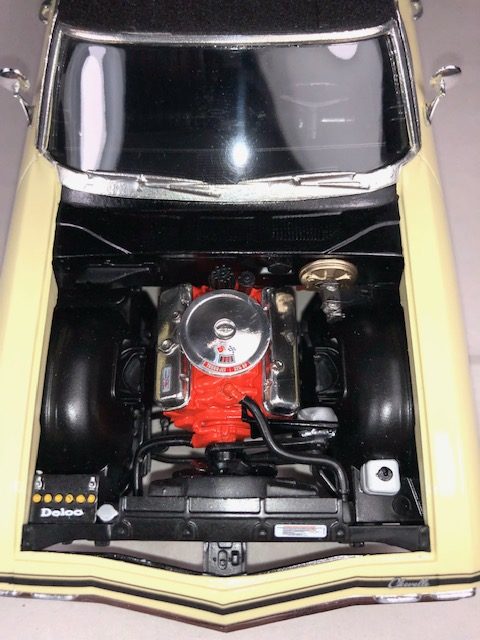First impressions are everything and Tamiya knocked it out of the part from the moment you open the box. The setup is normal Tamiya quality with each tree being bagged separately.
At first glance the parts are all molded very crisply and had little to no mold release despite some previous releases from the company. The parts are molded in clear, a satin chrome finish, white, black, metallic grey. The black rubber tires are very crisp with detail however there is no side wall “brand name” to be found which is a bit of a bummer.
The body went together with ease requiring about 45 minutes of careful sanding and dry fitting. A trick learned building the body was to apply your thin cement from the backside of the body, this way you can avoid fuzzing up any body lines or having a stray fingerprint on body. The only mold lines I uncovered after a quick dusting of grey primer were very light on the fender tops and easy to take off. After that the body was scuffed using 1000 grit and sprayed with Tamiya pink primer followed by base and clear coats.
Engine assembly consisted of a handful of parts followed by a few decals which are hidden once the body is mounted. Suspension was very simple with some nice detail – which was again covered up and hidden by the body.
The interior is on full display in this kit and can be ultra-detailed with aftermarket racing seat belts, flocking, etc. you get the idea.
I had no real complaints with this kit but if I were to knit pick, I would say the hardest part was making sure the body was glued and built straight so it mounted and all the glass fit properly. If building another one I would take extra time during these steps. The other thing would be the headlight assemblies are a bit finicky and all that hard work is hidden once painted and installed.
My final thoughts on the kit would be how it builds into a very detailed curbside model of the new Ford GT and I think even gives the diecast versions of the car a run for their money. It was a very fun build even though supercars are not my first model of choice, but it was a fun creative break from my normal builds, and it turned out very well!
Model on and never be afraid to step outside your comfort zone of building!
Brendan Glover – ACME

Additional pictures to be added





